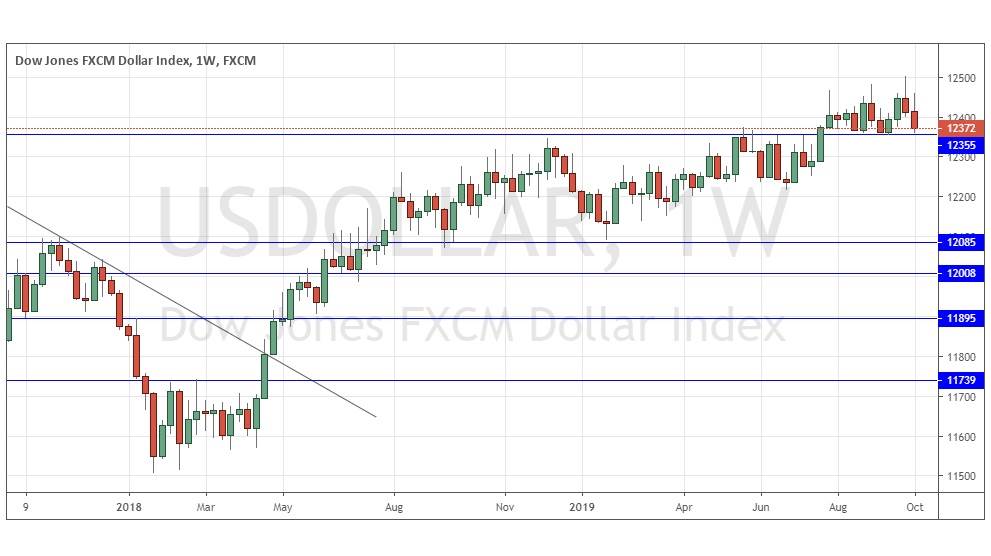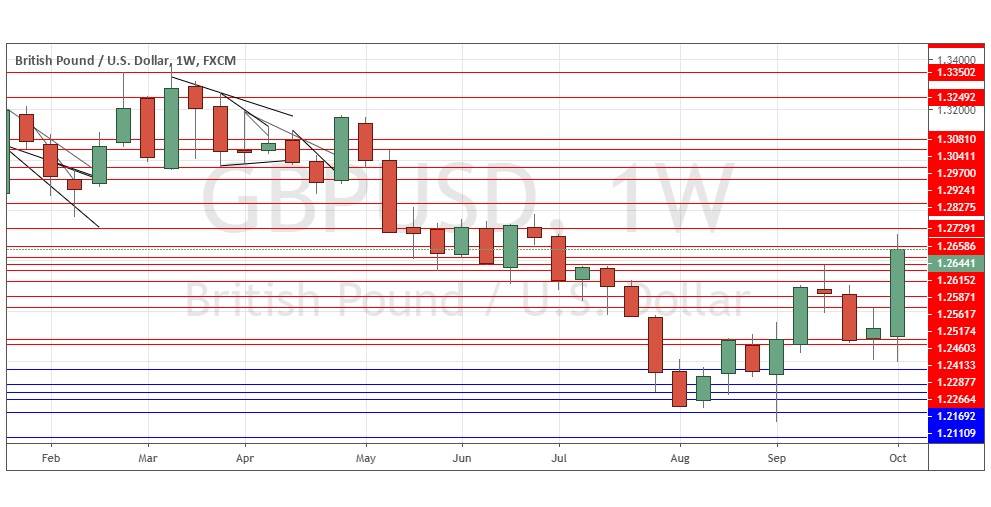The difference between success and failure in Forex trading is very likely to depend upon which currency pairs you choose to trade each week, and not on the exact trading methods you might use to determine trade entries and exits. Each week I am going to analyze fundamentals, sentiment and technical positions in order to determine which currency pairs are most likely to produce the easiest and most profitable trading opportunities over the next week. In some cases, it will be trading the trend. In other cases, it will be trading support and resistance levels during more ranging markets.
Big Picture 13th October 2019
In my previous piece on 22nd September, I forecasted that the best trades would be short of NZD/USD following a daily close below 0.6250 and short of EUR/USD following a daily close below 1.0989. The NZD/USD currency pair did not have any daily closes below 0.6250 that week, but the EUR/USD did have a daily close below 1.0989. However, that trade ended the week in profit by only two pips, so the overall result was essentially break even.
Last week’s Forex market saw the strongest rise in the relative value of the British Pound, and the strongest fall in the relative value of the Japanese Yen.
Last week’s market also saw the U.S. Dollar sell off to some extent.
Fundamental Analysis & Market Sentiment
Fundamental analysts are very split over whether the recent quarter-point cut in the U.S. interest rate will be the last cut for a while, or whether the Federal Reserve will follow up with a further quarter-point cut over the near term.
The U.S. economy is still growing quite strongly, but there are increasing fears of a pending recession, with the FOMC opining that the probability of a recession has grown.
The British Pound has received a strong boost as it seems as if there is a greater chance that the British Government and the E.U. will agree a new draft Brexit deal over the coming days, before the summit due towards the end of this week. If such a deal was agreed by the British Parliament, we could expect the Pound to rally further.
Stock markets have continued to advance moderately, especially the U.S. market. The benchmark S&P 500 Index is not very far now from its recent all-time high price. Sentiment is broadly risk-on, but that remains quite fragile.
Technical Analysis
U.S. Dollar Index
The weekly price chart below shows that last week the USD Index fell, printing a normal-sized bearish candlestick which closed near its low. However, the support level at 12355 seems to have held. The price is still up over both 3 months and over 6 months, indicating a bullish trend. These are mixed signs. The likely movement of the U.S. Dollar next week looks unclear to me.
GBP/USD
The past week printed a very large, strongly bullish candlestick which closed within its top quartile. This was the biggest weekly advance in this currency pair in several years. The price is above its level from 13 weeks ago, but not 26 weeks ago. These are mostly bullish signs, and it seems likely that we will see a further advance in this pair, at least at the start of this week. The key driver is the probability of a Brexit deal being agreed and getting through the British Parliament. If that continues to look likely, expect the price to continue to advance firmly. Conversely, if negotiations fall through or the British Parliament looks like rejecting any deal, expect the price to fall sharply. Volatility is likely to remain high.
Conclusion
This week I forecast the best trade will be long of GBP/USD but beware of volatility which is likely to be very high over the week.


